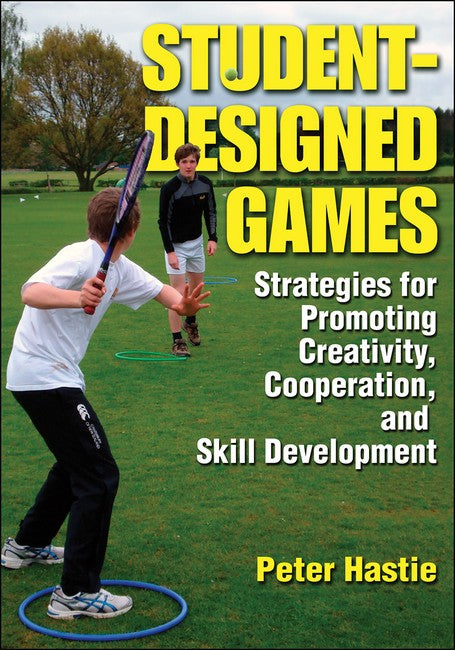Peter Hastie, professor in the department of kinesiology at Auburn University, has been teaching strategies for student designed games in both schools and universities. He has also researched the potential of student designed games to help students become more engaged in physical education, as well as develop a deeper understanding of games. Dr. Hastie is a member of AAHPERD, American Educational Research Association (AERA), and International Association for Physical Education in Higher Education (AIESEP). He enjoys whitewater rafting, traveling, and overland trekking.
Request Academic Copy
Please copy the ISBN for submitting review copy form
Description
Part I: Getting Started Chapter 1. An Introduction to Student-Designed Games A Brief Theory of Student-Designed Games What Makes a Good Game? What Student-Designed Games Are Not Getting Started With Student-Designed Games References Chapter 2. Educational Benefits of Student-Designed Games Games Making and the Physically Educated Person Games Making and Cooperative Learning Games Making and Student Motivation and Engagement Conclusion References Chapter 3. Instructional Strategies for Games Making Choose Outcome Goals Decide Type of Game and Student Choice Set Up Small Learning Groups Present the Challenge Provide Time to Explore and Experiment Provide Time to Play Review The Role of the Teacher Conclusion References Chapter 4. Understanding Games What Is a Game? Classifying Games Classifying Games According to Their Tactics Tag Games Target Games Invasion Games Striking and Fielding Games Net and Wall Games Conclusion References Part II: Designing Basic Games Chapter 5. Tag Games Key Principles of Tag Games Required Experiences for Success in Tag Games Key Strategies for Success in Tag Games Sample Tag Games Poor Tag Games Safety in Tag Games Questions to Consider When Designing Tag Games A Template for Designing Tag Games Conclusion References Chapter 6. Target Games Key Principles of Target Games Required Experiences for Success in Target Games Key Strategies for Success in Target Games Sample Target Games Poor Target Games Safety in Target Games Questions to Consider When Designing Target Games A Template for Designing Target Games Conclusion References Chapter 7. Invasion Games Key Principles of Invasion Games Required Experiences for Success in Invasion Games Key Strategies for Success in Invasion Games Sample Invasion Games Poor Invasion Games Safety in Invasion Games Questions to Consider When Designing Invasion Games A Template for Designing Invasion Games Conclusion References Chapter 8. Striking and Fielding Games Key Principles of Striking and Fielding Games Required Experiences for Success in Striking and Fielding Games Key Strategies for Success in Striking and Fielding Games Sample Striking and Fielding Games Poor Striking and Fielding Games Safety in Striking and Fielding Games Questions to Consider When Designing Striking and Fielding Games A Template for Designing Striking and Fielding Games Conclusion Reference Chapter 9. Net and Wall Games Key Principles of Net and Wall Games Required Experiences for Success in Net and Wall Games Key Strategies for Success in Net and Wall Games Sample Net and Wall Games Poor Net and Wall Games Safety in Net and Wall Games Questions to Consider When Designing Net and Wall Games A Template for Designing Net and Wall Games Conclusion References Part III: Moving Beyond Basic Games Chapter 10. Conversion Games Hybrid Games Relocation Games Transformation Games Conclusion Reference Chapter 11. Cooperative Games Collective Scoring Reversal Games Components of Cooperative Games A Template for Designing Cooperative Games Conclusion References Chapter 12. Assessment in Student-Designed Games What to Assess in Student-Designed Games How to Assess Student-Designed Games Evaluating Games Conclusion References

